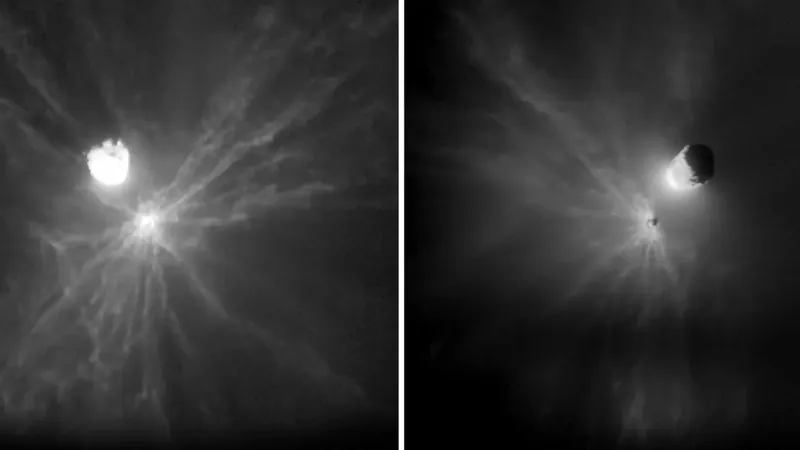
NASA's DART Mission Takes a Twisting Turn: Giant Space 'Boulders' Behaving Unexpectedly!
2025-07-15
Author: Wai
Three years ago, NASA made waves by smashing a spacecraft into a massive asteroid, proving humanity's potential to safeguard Earth from dangerous space threats. But now, fresh findings are casting doubt on the reliability of this asteroid-deflection strategy.
On September 26, 2022, the Double Asteroid Redirection Test (DART) spacecraft plowed into Dimorphos at a staggering speed of 15,000 mph (24,000 km/h). This bold mission not only shifted Dimorphos' orbit—reducing its travel time around Didymos by about 30 minutes—but also radically changed the asteroid's shape.
Although the collision occurred over 7 million miles from our planet, the success of the kinetic impactor method raised hopes for deflecting future asteroids. But a new study published on July 4 in The Planetary Science Journal unveiled complications: a gaggle of hefty 'boulders' dislodged during the impact are unexpectedly gaining speed and forming strange patterns.
Using images from the European Space Agency's LICIACube, which shadowed DART, researchers tracked 104 boulders ranging from 0.7 to 11.8 feet wide as they sped away from the asteroid. Alarmingly, these space rocks possess about three times the predicted momentum, likely due to an unforeseen 'kick' they received during the impact. Study lead Tony Farnham noted that this new dynamic alters how we must plan future missions.
Surprisingly, these boulders aren’t scattered randomly. Instead, they cluster into distinct groups, suggesting some cosmic mystery at play. Farnham remarked, "Something unknown is at work here," emphasizing the need for further investigation to prepare for potential asteroid threats.
Study co-author Jessica Sunshine likened the planning of these missions to a cosmic pool game, underscoring that all variables must be considered to avoid missing our target should an asteroid head our way.
Interestingly, DART's fallout hasn’t only yielded unexpected boulders. In April 2024, certain large fragments were cited as possibly heading toward Mars, risking future human settlements. Additionally, simulations indicated smaller debris could create a meteor shower visible from Earth in about 30 years, though they pose no serious threat.
Despite these uncertainties, the kinetic impactor method remains our best bet against hazardous asteroids. This topic gained urgency earlier this year when the "city killer" asteroid 2024 YR4 was briefly thought to have a 3% chance of hitting Earth in 2032—though that risk now stands at zero.
As discussions about asteroid defenses continue, experts are wary of potential cuts to NASA’s budget, which could hamper our efforts to detect and respond to space threats. The complexities unveiled by the DART mission highlight that protecting our planet is far from straightforward.



 Brasil (PT)
Brasil (PT)
 Canada (EN)
Canada (EN)
 Chile (ES)
Chile (ES)
 Česko (CS)
Česko (CS)
 대한민국 (KO)
대한민국 (KO)
 España (ES)
España (ES)
 France (FR)
France (FR)
 Hong Kong (EN)
Hong Kong (EN)
 Italia (IT)
Italia (IT)
 日本 (JA)
日本 (JA)
 Magyarország (HU)
Magyarország (HU)
 Norge (NO)
Norge (NO)
 Polska (PL)
Polska (PL)
 Schweiz (DE)
Schweiz (DE)
 Singapore (EN)
Singapore (EN)
 Sverige (SV)
Sverige (SV)
 Suomi (FI)
Suomi (FI)
 Türkiye (TR)
Türkiye (TR)
 الإمارات العربية المتحدة (AR)
الإمارات العربية المتحدة (AR)